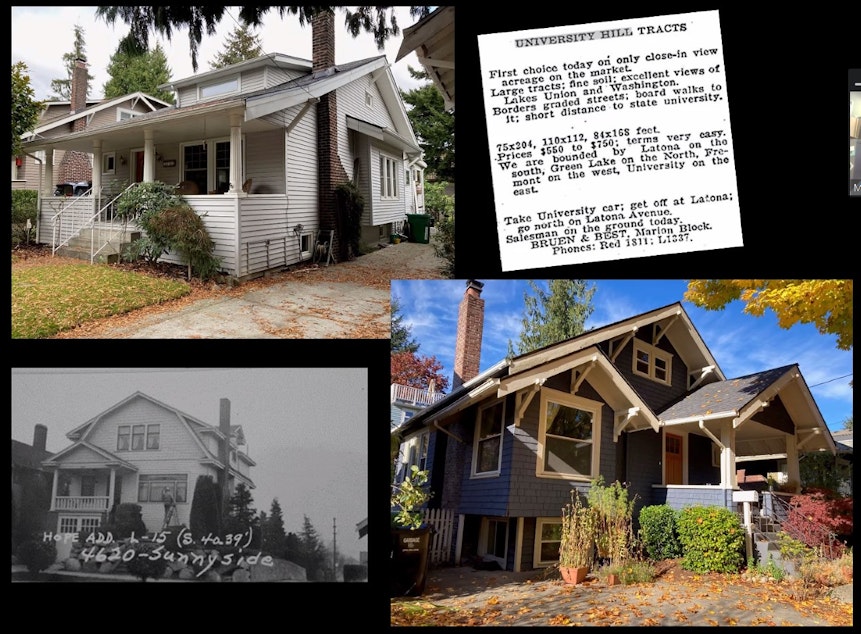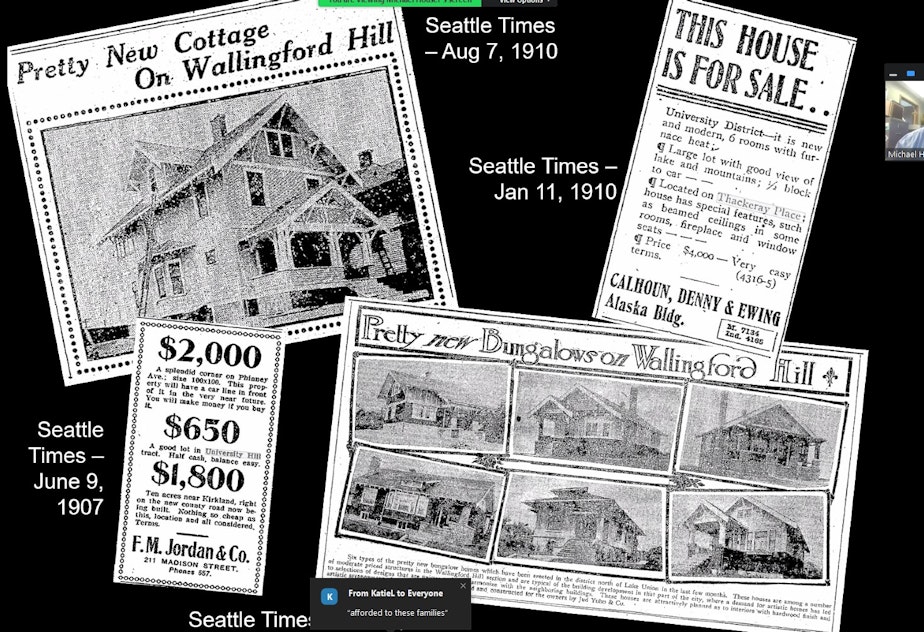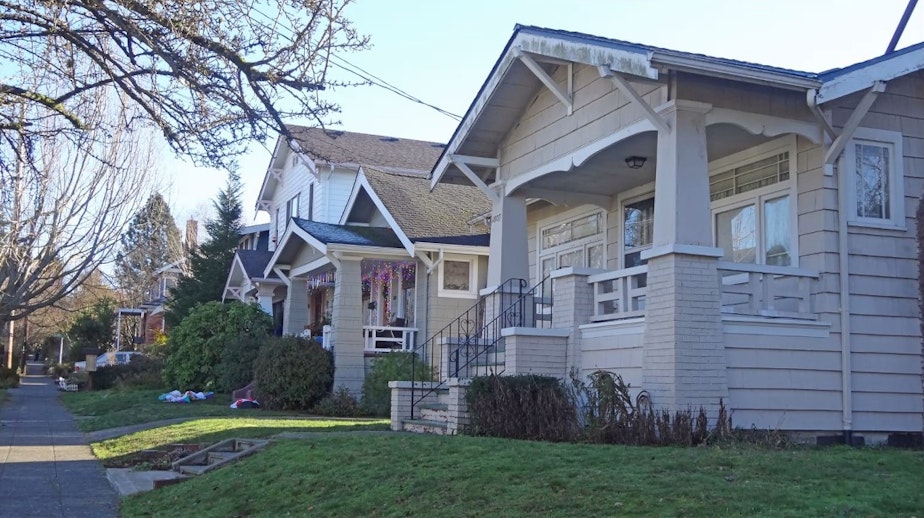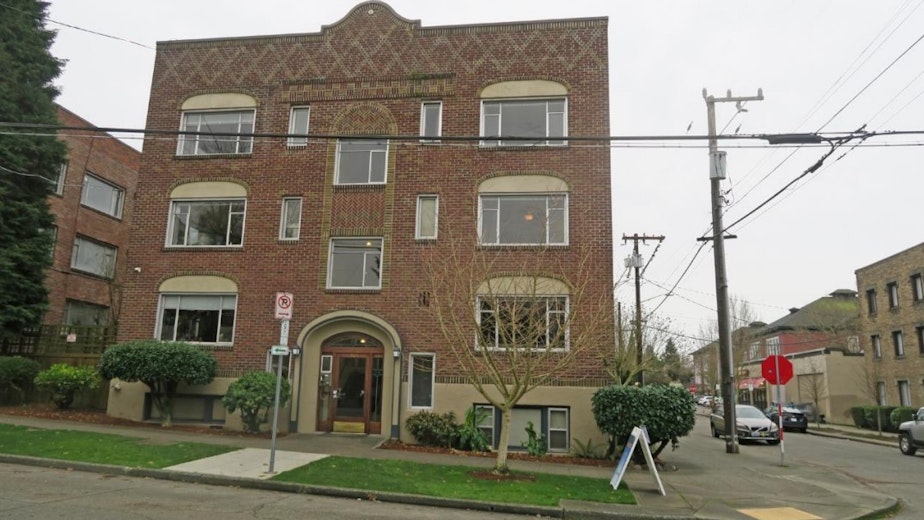Seattle's Wallingford neighborhood gets 'historic district' status

Seattle's Wallingford neighborhood should be added to the National Register of Historic Places, according to a unanimous vote by a group of experts Friday.
The group based its decision on Wallingford's collection of historic buildings and houses, but critics are worried about the decision's repercussions as the region faces a critical shortage of housing.
Wallingford has a lot of early 20th century, mail-order bungalows. Giving the neighborhood the status of "historic district" is an idea some people love and some people hate.
The Washington State Advisory Council on Historic Preservation met Friday, Oct. 14 to vote on whether Wallingford should receive historic district status as a neighborhood. Before the council's vote, Sarah Martin testified in favor.
“We hope it raises the profile of Wallingford’s older residences," Martin said. "And we hope it encourages conservation, maintenance, and adaptive reuse of older buildings.”
Rhonda Bush is a homeowner in Wallingford and one of the leaders in the effort.
“I love my home, a craftsman bungalow built in 1921, and I cherish this historic neighborhood,” she said. "Wallingford is unique, and it's largely due to the sense of place defined by the historic buildings found here."

As Bush gave her testimony, her voice shook with emotion. It's not surprising, as the public conversation around the issue has become heated. That's because many see it as a significant step on the path to making Wallingford a more exclusive neighborhood than it is now.
When Seattle's Mandatory Housing Affordability law was passed, which allowed denser development while requiring developers to pay a fee toward affordable housing, historic district status gave one neighborhood an escape from "upzones." Upzones allow neighborhoods to have increased density, by allowing for bigger homes, duplexes, townhomes, triplexes and apartment buildings.
The Seattle City Council unanimously approved an amendment to "remove areas within the Mount Baker Park Historic District from the North Rainier Urban Village expansion area, maintain existing zone designations, and do not apply MHA."

The concern that this tool could now be used in Wallingford, a highly accessible area with good transit and a university nearby, spilled over into Friday's public comment period. The majority of speakers were against the historic district designation.
"If we're prioritizing historic buildings over human suffering, what is history going to say about this neighborhood? What is it gonna say about this city, about this society?" Wallingford renter David Albares asked. "It's as if people were dying of thirst — and we're putting a fence around a body of water. It's not right, so let's please pause" until the City of Seattle's comprehensive plan, currently under development, assigns Wallingford its fair share of growth.
Some commenters mentioned that Wallingford's historic fabric includes apartments, too, which are illegal to build in much of Wallingford today.

Despite the volume of opposition, most critical comments received less consideration, as they did not come from homeowners in Wallingford.
Historic preservation officer Allyson Brooks explained this is because federal criteria values homeowner voices more, and the Washington State Advisory Council on Historic Preservation is making its recommendations to a federal body, the National Park Service.
"We are pushing the National Park Service hard, re: looking at their criteria, integrity, a lot of things," Brooks said.
Brooks recommended people with concerns voice them to the the park service.
Katie Lynd said that wasn't fair.
"It is so disheartening to hear that property owners are the only ones who have a voice in this designation," Lynd said.
She said she and her partner lived in Wallingford for 10 years as renters, and her partner owns a business in the area.
"When we tried to buy in Wallingford, we were priced out time and time again on old homes that needed too much work and went for 40% over asking," Lynd said. "I urge you to step back and conduct a voluntary inclusive process that gives renters an equal voice to homeowners."
Students at Lincoln High School, which is a landmarked historic building, wrote letters against giving their neighborhood historic district status.
But members of the council said the application packet was impressive, and included lots of documentation and information about history, including a description of exclusionary historical patterns, such as banking and zoning rules that excluded Black families and renters from Wallingford.
Now that Wallingford's historic district designation has a thumbs up from the Washington state council, approval is all but assured by the National Park Service.
UPDATE: This story has been updated to include more specific information about the nature of Wallingford's status. The right phrase is "historic district," rather than "landmark district."




